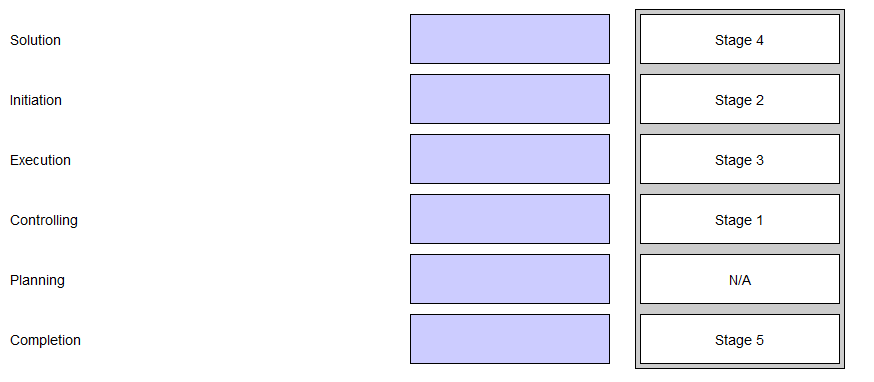CIMA E2 - Project and Relationship Management
W is the supervisor of the house-keeping team in a large hotel. X, a member of the team, is consistently late to work which means that other team members have to perform extra work. A number of team members have also complained to W about X's aggressive behaviour. Two months ago W spoke to X informally about these issues and for a short period things improved.
Â
But it is now clear that X is again displaying unacceptable behaviour and upsetting colleagues. W knows further action must now be taken to deal with the situation.
Â
With reference to the disciplinary process, which is the best course of action for W to take?
According to Kurt Lewin which of the following leadership styles was thought to result in the highest level of productivity and satisfaction?
According to Kotter's process of change, what is the purpose of building a guiding coalition?
During the early part of the twenty first century, B enjoyed considerable success by providing a large selection of popular movies to rent on DVD, from convenient high street retail stores. Unfortunately, B was slow to adapt to the switch from "bricks" (i.e. stores) to "clicks" (i.e. internet-based services) and was rapidly overtaken by D and other internet-based movie services.
Â
This is an example of a firm that enjoyed considerable success in the past, responds too slowly to changes in the external environment and perseveres for too long with the strategy that once served it very well.
Â
Which of the following best defines this practice?
A number of managers in an organisation approach change using a variety of techniques. Manager A focuses on staff training. Manager B provides large bonuses for effective project management. Manager C
restructures his team to reduce headcount. Manager D lays out the financial problems in the business and why change is unavoidable. Manager E calls his team together to openly discuss the issues. Manager F calls
for ideas from his team to make the change happen.
Based on Beer and Nohria's change theory, which of these managers can be described as Theory 0 managers?
Select ALL that apply.
A small project has been planned based on the following set of activities:
Â
Apply critical path analysis and identify the correct statement:
The critical path runs through A,B,D,E and C has 2 days of float (free slack)
The Project Management Institute's 5 project management process areas identifies that five stages apply in project management. Place the relevant stage against the appropriate description.

The organisational iceberg describes which TWO levels at which culture operates?Â
H is the owner of a motorcycle dealership in Los Angeles which provides sales, repair and servicing of very large motorcycles, typically with engines larger than 1000cc. Over the years H has built up a renowned team of highly skilled technicians that are experts in this particular size of motorcycle. H believes that their skills are rare and difficult, if not impossible, to imitate by any competitor in the region.
Â
Despite this advantage the company has been suffering from declining profits in the past three years and the marketing consultant has advised H to change the focus of the company towards small 50cc mopeds and scooters - because that "is clearly what the market is now wanting".
Â
The change being proposed is:
Every project has constraints. When running a project it is critical that the constraints are known.
Â
What are the primary constraints in a project?




